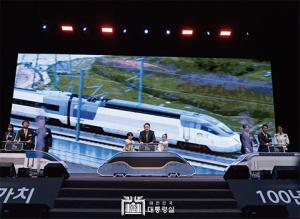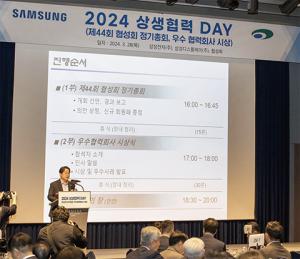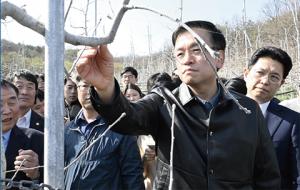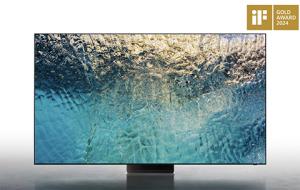 |
||
| ▲ 변찬우 상명대학교 대학원 융합생태환경공학과 학과장/교수 | ||
수생태환경복원의 미래, 디자인과 모니터링으로 그리다
수생태환경복원의 실제적 매뉴얼 확립, 수생태환경복원계 선구자
“학문, R&D, 기업, 지역사회의 장기적 협력으로 수생태 환경복원을 산업화해야 한다”
변찬우 상명대학교 대학원 융합생태환경공학과 학과장/교수
후손에 대한 도덕성이나 의무감을 주로 강요하던 환경에 대한 인식이, 산업화와 실효성의 가치로 입증되고 있다. 상명대학교 대학원에 융합생태환경공학과를 창설한 변찬우 교수는 장소마다 다른 생태계와 수질환경에 대한 선진 이론 연구는 물론, 현장 실무까지 각각 15년 정도씩을 수행해온 수생태환경복원 분야의 최고 전문가다. 우리나라는 1990년대 말부터 선진국의 유사 특허를 변용하거나 지역 생태계에 맞지 않는 수생태환경 관련 산업이 시작되다보니, 그 효과 면에서 불신을 초래하는 경우도 많았다. 하지만, 변 교수는 우리나라 생태환경 시스템에 맞는 원천기술의 특허와 신기술을 직접 발명하고 산업에 적용 후 모니터링하면서 그 올바른 모델과 지침을 제시하고 있다. 수생태환경복원을 통해 인간과 자연이 어우러지는 진정한 융합학문과 실천을 추구해온 변 교수의 명쾌한 대안을 정리해 본다.
Q. 파괴된 수생태계복원과 수질개선의 어려움을 극복한 과정과
이를 개선하는 수생태환경시스템의 필요성은?
A. 최근 기후변화로 생긴 홍수피해, 사막화현상, 오염된 수질은 물 순환체계와 에너지 흐름의 생태환경 자체를 망가뜨렸다. 하천, 습지, 호수, 저류지는 생태계에서 인체의 심장, 허파나 다름없기에 파괴된 생태계복원에서 가장 중요한 곳이자 복원을 하기도 어려운 곳이다. 그러므로 오염된 물을 생태적으로 정화하는 수생태환경시스템으로 다양한 생태계를 복원할 수 있다. 그래서 나는 우리 풍토에 맞는 수생태환경복원을 실현하고자 3가지의 난관을 극복했다. 첫 번째는 ‘현장의 생태환경적 특성’을 고려한 것이다. 그리고 일반적 건설방식에서 대상지마다 다른 생태계를 적용하지 못하는 데 대한 문제점을 개선했다. 두 번째는 수생태환경복원 관련 다양한 과학기술 분야를 디자인과 모니터링으로 코디네이팅해서 융합했다. 융합과정은 치수공학, 친수경관과 같은 건설 분야 및 생태과학, 환경공학기술, 그리고 이를 아우르는 디자인을 시도하고 실무적용을 통한 모니터링 결과를 도출하는 것이다. 세 번째는 대상지마다 다른 접근이 요구되는 생태환경적 소프트웨어는 물론, 건설이라는 하드웨어를 통합적으로 디자인해 창의적인 결과물을 만들었다. 이는 스티브 잡스가 상품개발을 해온 방식과도 유사한데, 생태환경복원 프로세스에서는 꼭 필요한 방법론이다. 우선, 한 프로젝트가 있다고 하면, 여러가지 어려움을 딛고 수생태환경복원에 관련된 정책자문, 연구개발, 설계, 시공, 유지관리, 모니터링까지 종합적으로 디자인(코디네이팅)해 왔다. 그 결과, 대상지마다 다른 수량과 수문학적 흐름, 수질, 돌쌓기, 습지식물, 야생동물, 미생물, 토양성분, 지질, 기후 등 생태환경적 특성에 맞춘 성공적인 수생태환경복원 모니터링 결과를 도출할 수 있었다. 그 성공 배경에는 우리풍토에 맞게 개발된 수생태환경시스템 특허 기술이 주요한 몫을 했다.
Q. 수생태환경시스템은 무엇이며, 생태적수질정화 비오톱에서
다단계 수질정화시스템의 구성과 그 역할은?
A. 수생태환경복원이란 하천, 습지, 저류지, 하수처리수 방류수, 간척지 개발로 훼손된 생태환경을 시스템적으로 복원한다는 의미다. ‘복원’은 원래 자연 그대로 돌려놓는 것을 넘어, 다양한 생물이 사는 새로운 생태계를 창출하는 의미를 내포하고 있다. 또한 인간 역시 새로운 생태계를 즐길 수 있게 된다. 나는 지난 15년 간 국내 하천, 저류지, 습지, 호수 등에 적용할 다양한 생태환경복원 관련 특허 신기술 등 원천기술을 약 25개 개발했다.
그 중 가장 유명한 것이 인공습지복원시스템인 생태적수질정화비오톱(SSB: Sustainable Structured wetland Biotop) 시스템이다. 이것은 수질오염물질을 생태적인 방법으로 처리하고 다양한 생태계가 서식하게 돕는 다단계 인공습지 시스템이다. 유입구, 침강저류지, 다단계로 된 습지 개방수면연못, 침전지 등 3단계 이상을 거쳐 최종방류수로 유출하도록 한다. 이는 국내외 논문, 특허, 신기술 및 2015년도 생태하천복원사업 부문의 최우수상, 우수상을 탄 하천들에 도입된 바 있고 관보에도 여러차례 소개된 바 있다. 특히 우수상으로 선정된 대전광역시 서구 매노천 생태하천복원사업은 고농도비점오염원의 유입 저감을 위해 환경신기술인 생태적 수질정화 비오톱시스템을 도입해 수질을 크게 개선하고, 친환경 물고기길을 설치하게 됐다. 그래서 매노천은 해당 기관의 모니터링 결과, 복원공사 첫해인 2014년에도 그 1년 전보다 수질이 매우 개선됐다.
생물화학적산소요구량(BOD)이 4.8ppm에서 1.9ppm, 부유물질(SS)은 53.6ppm에서 3.4ppm으로 줄어든 것이다. 게다가 매노천에는 이제 우리나라 고유종인 참갈겨니, 돌마자, 참종개 등 다양한 담수어류와 수달이 돌아왔다. 사업 전보다 맑은 물이 흐르고 포유류, 양서류, 조류, 저서무척추동물 등 8개 분야 생물종이 크게 늘어나 생태학적으로 건강한 하천이 되었다. 이는 다단계 수질정화 시스템 특허와 원천기술이 그 주된 역할을 한 것이다.
Q. 언제부터 이런 시스템을 개발하고 수생태환경복원사업을 시작하게 되었는가?
A. 우리나라에서 학부를 마친 뒤, 미국에서 석사, 일본에서 정부 지원으로 박사학위를 받고 생태와 환경설계분야의 선진이론과 실무를 익혔다. 이후 해외 선진이론을 바탕으로 15년 이상 국내 풍토에 맞게 적용하면서 특허 및 신기술 등의 국내 원천기술을 개발해 왔다. 이 과정에서 건설 및 환경분야에서 건설관련자들을 설득하고, 때로는 싸워가면서 생태환경복원의 실무를 수행하였다. 이 경험을 바탕으로 작년까지 국내 풍토에 맞는 5가지 유형의 수생태환경복원 모델을 정립할 수 있었다. 2013년에는 상명대학교 대학원과정에 국내 최초로 융합생태환경공학과를 개설해 생태환경복원의 교육과 이론개발, 그리고 실무를 개척해 오고 있다. 상명대학교 대학원에서 전임교수 신분으로 정년을 보장받은 이후에도, 안주하지 않고 산학협력트랙의 교수로서 개척분야 산업의 발전을 위해 최일선에서 토목, 환경, 조경, 생물 등 관련 실무자들과 씨름하면서 최선을 다해 왔다. 이런 노력들은, 15년 전만 해도 선진국과 거리감이 있던 우리 생태계 복원과 생태적 수질정화기술의 초보적 수준에서 이젠 그들을 능가할 수 있다는 자부심을 갖는 계기가 됐다.
Q. 현재까지 수생태환경복원사업이 진행된 곳에 대한 소개와 함께
사업 이후 변화된 점은 무엇인가?
한때 오염하천의 대명사였던 경안천을 생태하천으로 복원했고, 공주시 제민천 상류하천에 하수처리수를 정화해 하천의 유지용수를 공급하는 처리습지인 생태적수질정화비오톱 시스템, 광교신도시 생태하천, 경인운하아래뱃길 3공구에 설치된 비점오염원저감시스템, 광명시 8경 중 3경으로 지정된 안터생태공원, 양천구 신정 생태환경저류지, 간척지 생태환경복원 등 대규모 건설사업을 통합적으로 디자인하면서 수생태환경복원을 실현했다. 이 프로젝트들은 모두 건설과정을 통해 생명의 원천인 수생태계를 창조해 오염된 수질을 정화하고 지역명소로 만든 공통점이 있다. 선진국에서도 지속 가능한 개발로 오염지를 생태적으로 정화하는 것은 어려운 일이며, 우리나라는 15년 전에는 불모지나 다름없었다. 예를들어, 제민천 상류에 조성된 생태하천과 생태적수질정화비오톱은 하루에 하수처리수 약 5,000톤 정도를 하천 상류에 끌어와 수질을 정화하고 하천 유지용수를 공급하는 처리습지(treatment wetland)이다.
공주시의 7개년 간 수처리 모니터링 결과는, 미국의 최고 권위자가 만든 처리습지 모델에 대입할 경우 그 수처리 효율이 대부분 항목에서 10배 이상 높게 산출되었다. 게다가 누구도 모방할 수 없는 지역 풍토에 맞는 특허 신기술을 적용함으로써, 도시화로 이미 훼손된 자연생태계도 살려 냈고 멸종위기종, 천연기념물들이 찾아오는 생물 서식지까지 창출했다. 그 결과 지역민들의 즐겨 찾는 명소가 되어, 인간과 자연의 공생방안을 구체적으로 제시한 사례가 되고 있다. 하지만 이곳은 복원시공 직후, 유지관리를 지역의 공원관리업체나 수질환경업체에서 수행하려다가 심각한 녹조발생이 심각한 문제가 될 뻔 했다. 따라서 준공 전 시운전에서 성공적인 수생태환경복원이 확인되었다면, 준공 후 최소 2년은 수생태환경복원 전문가에게 유지관리를 맡겨야 한다.
Q. 이러한 수생태환경복원 시스템이 국내에서 자리 잡기 위해
필요한 해결책은 무엇인가?
A. 대상지마다 다른 생태환경적 문제점을 진단, 해결해왔음에도 여전히 자연을 보존하고 복원하는 일은 기존의 산업이나 자본의 이윤추구개념과는 달라서 때로는 투쟁하고 끝없이 설득해야만 했다. 예를 들면 기존의 하천건설분야가 생태나 환경 분야를 표방한다 하더라도, 수행하는 관료나 산업체, 제도들은 여전히 기존 건설관행을 벗어나지 못하는 경우가 많다. 생태환경복원의 답은 대부분 현장에 있고 최소한 5년 이상을 보고 진행해야 하는데, 이를 제대로 인식시키려면 관행을 바꿀 국민적 이해를 도모해야 한다. 생태환경복원과 관련되는 특정분야나 전문가들 역시 각자 자기 분야에 대한 소위 밥그릇 챙기기 보다는, 다른 전문가들과 의견을 조율해서 융합적 결과를 도출하는데 협력해야한다. 예를 들면 어떤 하천을 다룬다고 할 경우, 상류는 환경부, 하류는 국토교통부에서 주관하면서 상류는 수질 중심, 하류는 치수 중심으로만 접근하는 식이다. 그러면, 일선 지자체에서는 그러한 분야별 갈등이 더욱 심화되어 그 피해는 고스란히 지역민과 국민에게로 돌아간다. 게다가 생태환경복원 관련 분야가 많다보니 검증도 되지 않은 생태계복원 기능이나 수처리 효율에 대한 데이터 왜곡이 심각하다. 따라서 제대로 된 계획, 설계, 시공 및 유지관리 모니터링 매뉴얼과 제도를 전문적으로 정립해야 한다. 개발과 보전의 첨예한 갈등 속에서 최근 국가적인 사업으로 진행되는 새만금 간척지를 예를 들어보자. 현재 선도사업은 개발 쪽 보다는 2013년에 내가 참여하여 기본계획을 수립한 새만금 생태환경용지의 마스터 플랜이다. 현재 진행되는 그 설계 및 시공과정에서도 마스터플랜에서 제시된 생태계복원 및 수처리 효율이 검증된 수생태환경복원 프로세스로 진행될지는 의문이 남는다. 기존 관행이나 제도적 한계로 인해 대규모 건설사업 일수록 수생태환경복원에 어려움이 따르기 때문이다. 따라서 편견을 깨고 사업의 본질을 제대로 보게 할 수 있는 생태환경복원 효과에 관한 각 분야 전문가는 물론, 국민적 이해를 도모하는 홍보와 이해가 더욱 필요해 보인다.
Q. 경제발전의 필요악일 수밖에 없는 수생태계 파괴에 대한
해결책과 공존방안은 무엇인가?
A. 위에 언급했듯, 대개 건설과 도시화는 반(反)생태적인 행위일 수밖에 없지만 생물 서식지 재창출과 오염된 물의 생태적인 정화를 통해 맑은 물에 사는 지표종이라는 물고기들이 돌아오도록 하는 생태환경시스템을 성공적으로 적용했다. 또한 이러한 청정 생태환경을 국민들이 즐길 수 있는 환경으로 조성하여 생기는 부가적 효과가 크다. 이러한 방식을 제대로 교육하고 실천할 제도, 법규화, 산업화를 적용하여 더 많은 곳에 적용했으면 한다. 나는 학자이자, 산학트랙교수로서 융합생태환경공학과정의 학생들에게 이 점을 집중적으로 가르치면서 산업화를 위한 노력을 하고 있다. 이 분야가 양성화가 되고 활성화 돼, 융합학문 및 산업의 동시 발전을 통해 경제적인 먹을거리 창출도 가능하다고 본다. 그렇게 건강한 산업으로 정착하면 관, 기업들도 윤리적인 관점에서 이윤을 창출하는 개념을 이해하고 실천에 옮길 것이다. 생태적인 수질정화 사업의 수요는 갈수록 증가하여 생태하천복원사업은 물론, 농어촌비료, 도로건설로 생기는 비점오염원의 생태적 정화, 하수처리 방류수에 대한 처리습지, 생태환경저류지 및 간척지 등에 이르기까지 국내에서 연간 1조 8천억 원에 이르는 수요를 대체하고 창출할 수 있다. 또 우리의 경제모델을 따르는 동남아 저개발 국가에서 이 생태환경복원의 큰 시장을 개척할 가능성을 염두에 두어야 한다.
Q. 수생태환경복원 시스템에 대해 선진국보다
국내에서의 연구가 더 유리하다고 생각하는 이유는?
우리나라는 경제발전과 환경파괴가 정비례한 나라다. 이에 대한 복원사업은 반드시 필요한 과제다. 유엔기후변화협약(COP21)에서도 파리 테러 후 중요행사를 모두 취소했는데도 주최국 프랑스가 도쿄의정서를 개선한 기후변화공동성명을 발표하고 빌 게이츠와 마윈도 적극적인 환경운동동참의사를 밝혔다. 유엔은 녹색기후기금(GCF)을 발족하였으며, 2012년 한국 최초로 인천 송도에 사무국을 유치했다. 그렇기 때문에 한국에서도 환경친화사업에 대한 비중이 높아질 것이며, 선진국의 환경사업은 비용, 사회구조환경적인 면에서 화석연료에 크게 의존하는 산업구조를 가진 개도국의 절대적인 모델이 될 수가 없다. 파리기후협정은 기업들의 온실가스배출을 제한하고 상대적으로 불리한 개도국에 기술지원을 하는 대안을 제시하고 있다. 우리나라는 개도국에서 선진국으로 최단기간에 경제력을 발전시키면서 환경을 파괴한 나라다. 그러나 생태환경복원에 있어서도 성공모델을 만들 경우, 개발과 환경발전이라는 두 마리 토끼를 잡고자 하는 대부분 개도국들은 서구의 선진국 모델보다는 우리의 것이 더욱 좋은 모델상품으로 자리 잡을 것으로 본다. 향후 친환경 건설과 생태환경복원 분야의 한류를 꿈꿀 수 있다고 본다.
Q. 앞으로 수생태환경시스템을 더욱 확장, 발전시키기 위해서 어떠한 노력이 필요한가?
A. 양성화 단계에서 산업화를 정착하기 위해서는 분야에 대한 교육, 홍보, 인재양성 뿐 아니라 전문가, 기업 등 자금을 움직일 수 있는 사람들의 충분한 인식도 필요하다. 빌 게이츠, 손정의, 생전의 잡스도 빈부격차와 기아해결에 관심이 많았고 그런 사람들은 다음에 반드시 환경문제를 생각한다. 기후변화의 악순환으로 홍수 등 재해가 일어나다 보니 그것을 해결할 필요성을 느낀 것이다. 글로벌 스포츠브랜드의 요한 앨리아쉬 회장은 지구에 산소를 공급하는 아마존의 열대우림을 일부 구입해 자연 그대로 두도록 했고, 지난달에 앨 고어는 TED에 나와서 환경문제의 대안에 대해 전보다 더 희망적인 이야기를 하기 시작했다. 나의 경우는 건설과 개발을 통해 생태계의 허파인 수생태계를 창출하고 수질환경을 개선했다. 그간 실무수행에 매진하느라 아직은 이러한 노력들의 가치를 대외적으로 충분히 알리지 못했지만, 그 동안 국내의 다양한 실제사례에 적용해서 많은 성공을 거둔 모니터링 데이터와 성공을 확신할 수 있는 원천기술과 실무경험이 있다. 이를 바탕으로 알리고 실천해 나아가면, 그간 대척점에 있었던 경제논리와 생태환경논리가 함께 할 수 있다는 패러다임으로 바뀔 수 있을 것이다.
Q. 마지막으로 앞으로의 계획
A. 우선, 지금까지 원천기술화 한 수생태환경복원 시스템을 건전하게 산업화 하는 것이다. 보다 궁극적인 계획은, 보다 많은 사람들이 건강한 자연의 혜택을 누릴 수 있도록 하는 것이다. 한 TV방송에서 나를 일컬어 “생태환경복원의 미다스”라 소개한 적이 있다. 이것은 수생태환경복원이 지금 당장은 크게 돈 되는 상품으로 보이지 않더라도, 제대로 양성화되면 황금보다 더한 직·간접적인 가치를 만들어 낸다는 것을 의미한다. 그간 나는 공산품을 찍어내듯 적용하려는 기업들의 M&A 제의에 정중히 거절하며 조금만 더 기다리라고 했다. 그리고 나서 교육, 연구, 기술 개발, 실무적용 등 많은 노력을 거쳐 우리 풍토에 맞는 수생태환경복원의 실제적 모델을 다섯 가지 정도로 정립하였다.
올해부터는 산업화가 필요한 시기라고 본다. 알리바바의 마윈은 중국의 산업화과정에서의 환경오염세태에 주목하고, 앞으로는 자연과 환경에 투자하겠다며 회장직에서 물러날 것을 선언한 것도 자극제가 된다. 자금과 영향력을 가진 현명한 기업가들이 제대로 정립된 수생태환경복원의 기술적 특성을 이해하고 적극 참여한다면 건강한 사업으로 정착될 수도 있다. 올해부터 나는 방송 PD나 신문기자들의 관심을 가능한 한 수용하고, 보다 많은 분야 사람들에게 그간 내가 해온 일들을 알리면서 개척분야를 양성화된 산업으로 끌어 낼 수 있는 계획을 하나씩 실천하고 있다. 수생태환경 복원의 교육, 이론, 실무로의 확장을 위한 작은 시작이다.
프로필
He is... 서울대학교에서 학부를 마치고, 미국으로 유학을 떠나 생태계획이론의 권위자인 이안 맥하그(Ian Mcharg)교수가 있던 펜실베니아 대학원(University of Pennsylvania)에서 생태계획과 지역․조경설계 전공으로 석사학위를 받았다. 그 후, 한국과학재단과 일본학술진흥재단에서 우수과학자를 지원하는 박사학위 프로그램에 선정되어, 일본 동경농업대학(東京農業大學)에서 생태환경설계이론으로 박사학위를 취득했다.
박사학위 취득 후에는 약 15년 간 LEED Society와 상명대학교 산학협력단부설 융합생태환경센터를 중심으로 생태환경복원관련 계획, 설계, 복원시공, 유지관리 모니터링의 실무를 통합적으로 코디네이팅 해왔다. 그 수행한 결과와 모니터링 데이터를 근거로 <생태하천, 2010, 나무도시> 등의 저서와 국내외 다양한 전공 분야의 권위 있는 논문으로 발간하고, 현재까지 국내 원천기술의 특허와 신기술 25개를 개발하기도 했다. 변교수는 2013년도 3월부터 국내최초로 대학원에 융합생태환경공학과를 창설, 학과장과 센터장을 맡으면서 산학 발전을 위해 매진하고 있다.
Realizing the future of aquatic ecology environment restoration with innovative design and monitoring
Byeon leads the restoration by establishing practical manual
"National level long-term cooperation is needed to industrialize the restoration projects"
Byeon Chan-woo, Dean of Fusion Ecology Environment Engineering Department of Graduate School in Sangmyung University
Q. Tell us about the needs of the aquatic ecology environment system and the difficulty in improving water quality?
A. The recent climate change which caused flood, desertification and water pollution intensively destroyed the flow of energy and water circulation in nature. Rivers, wetlands, lakes and reservoirs are most important yet most difficult areas to restore once they are destroyed. For this, I've developed the patented aquatic ecology environment system with which I could be able to solve the three existing difficulties. First of all, I took into account the regional characteristics in order to bring up a solution to the existing one-directional construction. Secondly, I introduced a new design and monitoring system by combining various science technologies including hydraulic engineering, water-friendly construction, ecological science, environmental engineering. Thirdly, I created bioenvironmental-friendly software as well as constructional-hardware through an integral designing process which is similar to Steve Jobs' product development method. To put it shortly, the restoration system gives a comprehensive solution from policy advice, R&D, design, construction and maintenance to monitoring. With this system, I have achieved successful results in improving water quality and ecological restoration customized to each region, climate, ecology and environment.
Q. What is the aquatic ecology environment system and what is the role and contents of the multi-phase water purification system of SSB?
A. The aquatic ecology environment system means to restore the ecology and environment destroyed during the development of rivers, wetlands, reservoirs, sewage disposal plants and reclaimed-land. I've developed about 25 patented original technologies that can be applied to a restoration project for the last 15 years. SSB (Sustainable Structured wetland Biotop) among them is most famous. It's an artificial multi-phase wetland system that can ecologically remove pollutants and help living creatures prosper. The wastewater gets filtered more than 3 times through inlet, undercurrent, multi-phase open surface wetland pond and settling reservoir to be fully released. Thanks to its innovation, SSB has appeared on media and the system also was used for the rivers that won the top and runner-up prizes in the river restoration sector in 2015. The Maeno River in Daejeon City (top prize), for example, used SSB and significantly improved the water quality when compared to the previous year and the city also built a new eco-friendly waterway for fish. It is reported that BOD (biochemical oxygen demand) was reduced to 1.9ppm from 4.8ppm and SS (suspended solid) to 3.4ppm from 53.6ppm. As a result, many native fishes and otters once disappeared came back home and eight new species such as amphibians, wild birds and invertebrates were also found around the river.
Q. When did you start this innovative development and what was the motivation?
A. I graduated university in Korea but finished the master's course in the US and the PhD in Japan with the support from government. I widened my knowledge extensively with advanced theories and practices during these academic years. And I have applied this accumulated knowledge to develop original technologies customized to the Korean climate for the last 15 years. It was really hard to persuade the officials of the construction and environment-related departments during this period but I carried it out steadfastly on the benefit of creating a better ecology and environment in Korea. As a result, I have introduced the five aquatic ecosystem restoration models. In 2013, I opened Department of Fusion Ecology Environment Engineering at Sangmyung University Graduate School and has been exerting my utmost effort in developing effective teaching materials and training in cooperation with other departments such as civil engineering, landscape architecture, and biology. I'm really proud of what I have achieved and will keep carrying on my continuous R&D in the field.
Q. Give us some of good examples of the restoration and their effect?
We restored the notoriously polluted Kyeongan Stream, installed SSB in The Jemin Stream in Gongju City, installed the non-point pollution source sensing system in an ecology stream in Gwanggyo New Town and in the Zone 3 of Gyeongin Ara Waterway, and also carried out the construction of Anteo Ecology Park in Gwangmyeong City, Sinjeong Ecology Pond in Yangcheon District, and a reclaimed land ecology restoration. Through these restorations, we improved the water quality and made the places as a landmark of the region. The ecology stream and the SSB system created in the upper region of the Jemin Stream in Gongju City, for example, is a treatment wetland which purifies the water by drawing up about 5,000 tons of sewage water to the upper region of the stream a day. This is 10 times more in processing efficiency than a treatment wetland created by one of the top American authorities in the field according to the result of the city's 7 years of monitoring. Also, it not only invited endangered species but it became a resting place for local residents. However, at least 2 years of the initial management period must be carried out by the restoration specialists in order to maintain the water quality.
Q. What must be done for the restoration systems to settle down in Korea?
A. As the value of restoration is not at generating short term profits, I often have to persuade the industry officials. One restoration project generally takes about 5 years but the existing regulations and practices are quite persistent in their own ways without a hint of change or improvement. The change of both the public and the industry specialists' recognition and a close cooperation between departments, therefore, are a must in order for these advanced restoration systems to settle down in Korea. For example, if one department manages the upper region of the river with focus on water quality while the other the lower reaches on measurements without any communication or cooperation, the local residents are the first ones who are affected from this bad consequences. The unproven theories and practices prevalent in the field also must be made clear through systematic manuals covering design, construction and maintenance. If I give one more example, I designed the master plan for Saemangeum Ecology Land Project in 2013. But I doubt whether it will be processed as planned considering the existing practice and regulations. It is important to see what will be the true value of the project and what we can achieve as a result in a long-term view when we carry out a project.
Q. Development naturally entails part of destruction to aquatic ecosystem. What is your solution?
A. As I mentioned above, my systems, SSB in particular, bring our society a purer water, an improved ecology and a better living environment. If we improve our concept of making profits from an ethical standpoint, these restoration systems can actually contribute to not only clean environment itself but also generating a considerable amount of profits. The restoration projects actually are estimated to create KRW 1.8 trillion annually. When our technology and knowhow in the field reach a certain level, we can also pioneer overseas market, especially developing countries, to make additional profits. So we had better start applying these advanced restoration systems both in theory and practice.
Q. Why is the research on the aquatic ecology environment system is better off in Korea than in those advanced countries?
A. The level of economic development and destruction of the environment are in direct proportion in Korea. So the restoration project must be carried out in parallel. The UN and many global leaders also announced joint statements or participated in campaigns relating to climate change and environment. The UN in particular established Green Climate Fund and Korea invited the secretariat in Songdo, Incheon in 2012. This means that there is an increasing importance of eco-friendly projects in Korea which is closely connected with Paris Climate Change Accord that has suggested an alternative that the advanced countries provide a technology support to developing countries in return for restricting the level of greenhouse gas emissions. Korea destroyed the environment in the shortest period of time during the economic development. Likewise, if we restore the destroyed environment in the fastest period of time, we can be a role model for many developing countries which are following the similar development process.
Q. What is your plan to spread the aquatic ecology environment system?
A. A multilateral effort is needed from education, manpower and promotion to financial support. It is notable that Bill Gates and Steve Jobs showed a great interest in environment, Chairman Johan Eliasch of HEAD (a global sports brand) bought part of the Amazon to protect the forest from destroying, and Al Gore presented a hopeful message about environment at TED. As for my part, I'm doing the same thing by improving the water quality and ecology. I will use the monitoring data, original technology and knowhow I've accumulated to spread the aquatic ecology environment system.
Q. Lastly, what is your future plan?
A. I plan to commercialize these advanced systems so that more people can enjoy a better and clean environment. Personally, I will stick to my original intention of protecting environment rather than making profits and that's why I kindly rejected the business deal such as M&A offered from other companies. Jack Ma's announcement of retirement so that he could focus on investment in environment is really encouraging for me. I hope more and more businessmen will start to see the importance of the restoration projects so that we can create a better living environment. For this, I will also use the benefit of media to the fullest to improve the public recognition.
정재헌 기자 jjh05220@naver.com







